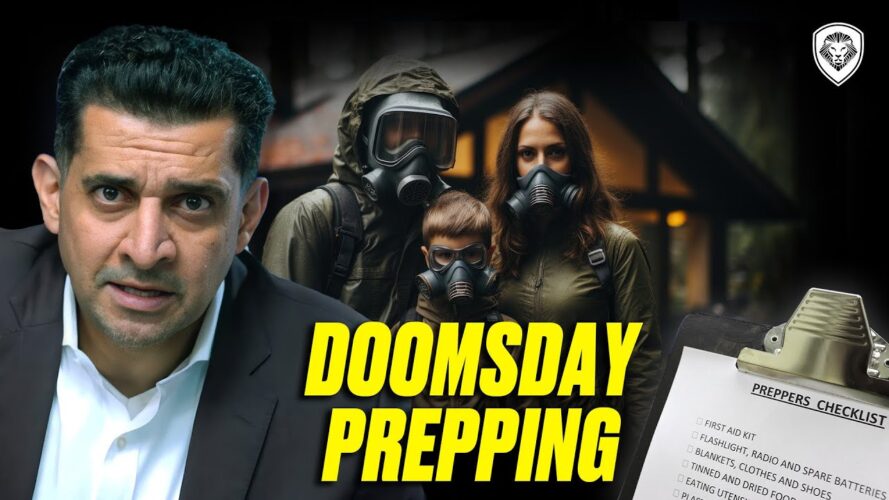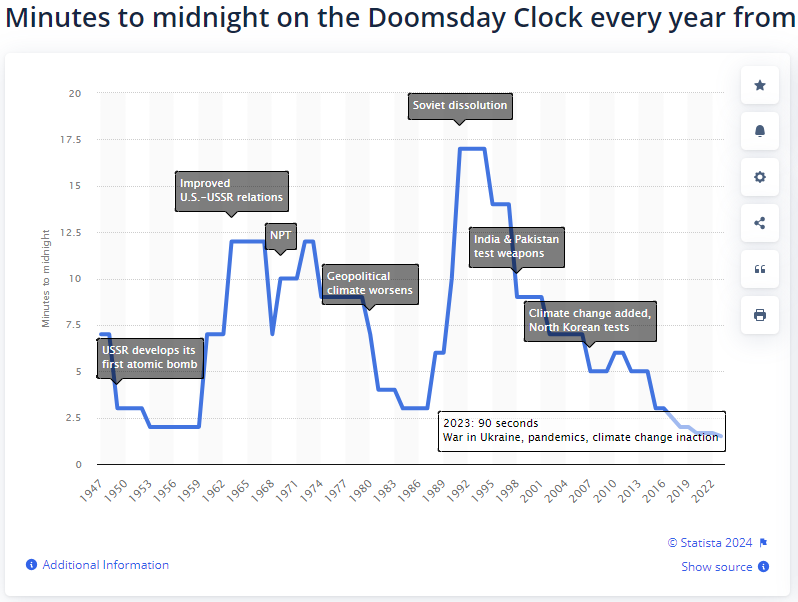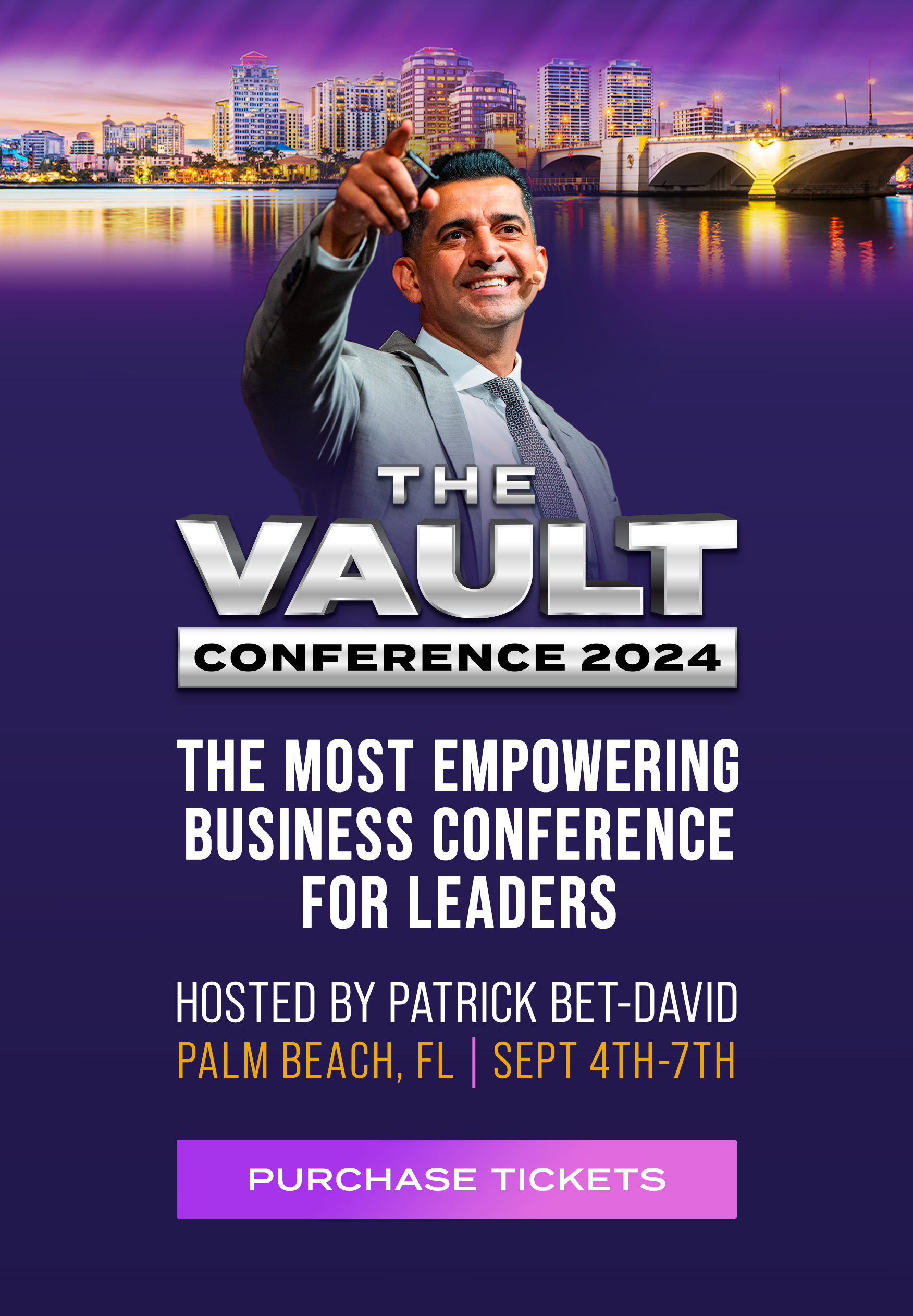In this video, Patrick Bet-David explains how to be prepared for a doomsday-type scenario in 2024. The data shows that more Americans are preparing or “prepping” than ever before.
In December, Wired magazine broke the news that Facebook founder and billionaire Mark Zuckerberg was building a $100 million compound in Hawaii that includes an underground bunker, complete with blast resistant doors and water tank to last him years.
The Collins English Dictionary’s word of the year for 2022 was “Permacrisis,” which they define as “an extended period of instability and insecurity” and which BBC defines as “the feeling of living through a period of war, inflation, and political instability.”
Related: Prepping for Doomsday: The Whys and Hows, and Which Billionaires Are Doing It
The Doomsday Clock, a measurement which surveys the opinions of nuclear war risk experts, was founded in 1945 by Albert Einstein, J. Robert Oppenheimer and scientists from the University of Chicago. The clock reached a record in January 2023, where the experts claimed we were 90 seconds to “midnight,” or total nuclear apocalypse.
Prepping: What and Who
Data from research firm Finder shows that the most common items purchased by doomsday “preppers” are food and water, toilet paper, medical supplies, survival kits, stashes of cash, and home renovations. The average prepper spends $146 on their food rations and $580 on their renovations—possibly creating cheap bunkers or bomb shelters.
The study also found that men are 12 percent more likely to be preppers than women (35 percent vs. 23 percent). Roughly a third of the adult population in the US spent a collective $11 billion on emergency preparations, or an average of $149 each, from April 2022 to April 2023. There is also a discrepancy in age groups: members of Generation Z are most likely to prep for a doomsday scenario at 40 percent, followed Generation Y (millennials) at 39 percent. Boomers are least concerned at 18 percent.
Learn the benefits of becoming a Valuetainment Member and subscribe today!
Preparedness Range
There is a range of preparedness among preppers. Some opt for just the basics, with a survival kit that gathers about $1,000 worth of supplies. They will collect essential items like non-perishable food, water purification tablets, first aid kits, flashlights, and tools. They might also enroll in survival training courses to learn how to cook without a modern kitchen, navigate the wilderness, and perform basic medical care. Survival classes are reportedly totally booked in some areas, with people showing unprecedented interest in learning these skills.
Then there are those who create a “bug-out bag” for roughly $2,000, getting a tent, sleeping bag, a portable water filtration system, and compact cooking supplies, as well as communication devices like two-way radios and satellite-powered phones.
Then there are people who decide to spend over $5,000 on home extensions and additions. They might install a back up power generator, solar panels, or a water storage system, or they might reinforce their doors and windows and create a security system for potential attacks from marauding bands (again, we’re talking doomsday here—let your imagination run wild).
The big leagues are when you want to drop $50,000 to $500,000 on getaway shelters or log cabins to which you can retreat if things get dicey. People purchase a property in remote regions of the country, far away from the madding crowds of the cities, and construct an off-grid hub with a water source, solar powered electricity, and small farms for long-term self-sufficiency.
People also buy vehicles which they customize for survival conditions. They modify them with reinforced armor plating, off-roading capabilities, and state-of-the-art communications systems. They might also get a rooftop tent container, extra storage for fuel, and various supplies for extended travel in case they need to evacuate.
Those who are really serious about preparing for the worst build a community survival compound, which ideally begins at $1,000,000 and only goes up from there. To bring such a creation into existence, one must collaborate with like-minded individuals as they implement communal kitchens, medical centers, and defense structures.
Then, the gold: private doomsday bunkers for $5,000,000 to $10,000,000, and then luxury bunkers for $15,000,000 or more.
These might feature a year-long supply of food, water, air filtration systems, advanced security measures, and be built to withstand immense natural disasters. The luxuries could include home theaters, swimming pools, gourmet kitchens, and advanced technology for monitoring the outside world.
Watch the rest of Patrick’s video to learn about the best survival vehicles and various real estate designs for the ideal doomsday bunker.
 Shane Devine is a writer covering politics, economics, and culture for Valuetainment. Follow Shane on X (Twitter).
Shane Devine is a writer covering politics, economics, and culture for Valuetainment. Follow Shane on X (Twitter).
























Add comment